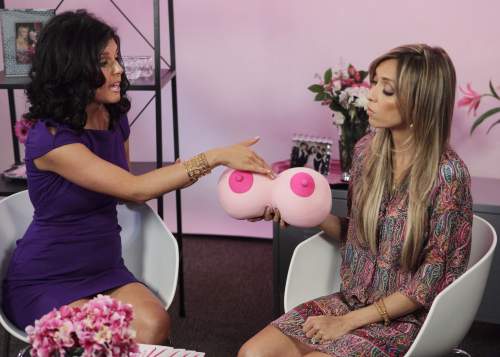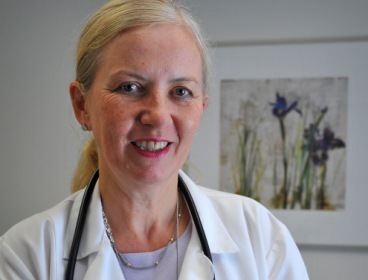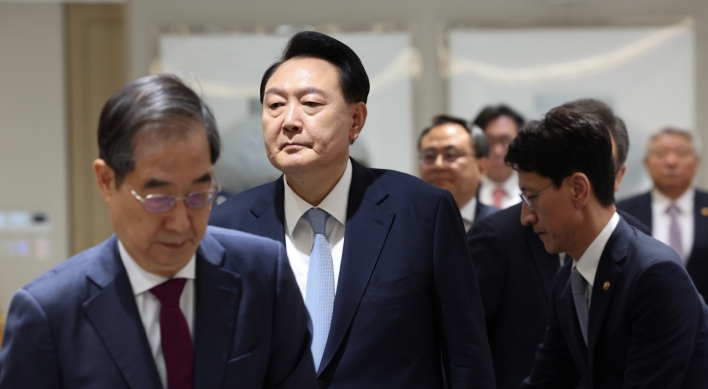Just two years after Bravissimo, a lingerie maker for women with larger bust sizes, launched a KK-cup size, it recently introduced the L-cup to meet the growing demand for larger sizes.
According to a report in the Daily Mail, the unprecedented demand for bigger bra sizes can be explained by three things.
1. Fat
The average British bra size has increased dramatically. In the 1950s, the average size was B-cup, but it has since increased to 36C. Bravissimo estimates, however, that it could in fact be closer to 34E.
Breast cancer expert professor Michael Baum said that “fat is laid down on breasts as much as thighs and bottoms. We are experiencing an obesity epidemic, so the increase in women’s measurements isn’t that surprising.”
2. Hormones
However, there are also more women with slim figures but big breasts. According to Bravissimo’s research, the majority of women they contacted are “small in the body and big in the bust.” This indicates the reason for bigger breasts is not just fat.
Marilyn Glenville, specializing in women’s health and hormones, said in the report: “We have to look at what stimulates breast tissue growth -- and that’s estrogen, the female sex hormone.”
According to Glenville, women experience a surge of estrogen as they reach puberty earlier than before, have fewer children and breastfeed for less time. “With more women today putting off pregnancy until later in life and having fewer children, they experience many more monthly cycles than previous generations did, and are exposed to more estrogen.”
According to a report in the Daily Mail, the unprecedented demand for bigger bra sizes can be explained by three things.
1. Fat
The average British bra size has increased dramatically. In the 1950s, the average size was B-cup, but it has since increased to 36C. Bravissimo estimates, however, that it could in fact be closer to 34E.
Breast cancer expert professor Michael Baum said that “fat is laid down on breasts as much as thighs and bottoms. We are experiencing an obesity epidemic, so the increase in women’s measurements isn’t that surprising.”
2. Hormones
However, there are also more women with slim figures but big breasts. According to Bravissimo’s research, the majority of women they contacted are “small in the body and big in the bust.” This indicates the reason for bigger breasts is not just fat.
Marilyn Glenville, specializing in women’s health and hormones, said in the report: “We have to look at what stimulates breast tissue growth -- and that’s estrogen, the female sex hormone.”
According to Glenville, women experience a surge of estrogen as they reach puberty earlier than before, have fewer children and breastfeed for less time. “With more women today putting off pregnancy until later in life and having fewer children, they experience many more monthly cycles than previous generations did, and are exposed to more estrogen.”

3. Xenoestrogens (foreign estrogens)
Hormone Replacement Treatment for menopausal women and contraceptive pills affect cup size too, according to the report.
Pesticides, plastics and cosmetics may also influence bra size. Exposure to products such as tinned food, drinks cans and plastic bottles, which contain Bisphenol A (BPA), may also play a role. These xenoestrogens are reported to effect sperm and fertility and are “potentially affecting women, too -- and the proof could be in our bras."
“Applying moisturizers to the skin and often directly on to the breast may stimulate growth in breast tissue,” Glenville said.
Milk could be another contributor to the increase in bra sizes. The report said about two-thirds of the milk British people consume comes from pregnant cows, which contains high levels of estrogens and other hormones.
Many women aspire to have bigger breasts; however those with big breasts can suffer from chronic back pain and other inconveniences in their everyday lives. Even as more women visit plastic surgeons for breast enlargement operations, an increasing number of women are inquiring about breast reduction operations.
“There have always been women who have disproportionately large breasts, compared to their frame. But they are more likely to seek help now. The women I see are usually sick of the physical and psychological discomfort,” said plastic surgeon Dr. Puneet Gupta.
By Lee Woo-young (wylee@heraldcorp.com)
<한글 요약>
여성의 가슴이 커지고 있다
영국의 한 속옷 전문 업체 브라비시모가 KK컵 브라를 개발하여 판매한지 2년후, 이보다 더 큰 사이즈를 사이즈의 속옷을 만들어 달라는 여성들의 요청에 이 업체는 L 사이즈의 거대 브라를 선보였다.
영국 데일리메일은 L 사이즈컵의 개발로 여성의 가슴이 점점 커지고 있는 이유를 분석했다. 여성의 가슴이 점점 커지고 있는 이유는 약 세 가지를 들 수가 있다.
여성의 가슴이 커지고 있다
영국의 한 속옷 전문 업체 브라비시모가 KK컵 브라를 개발하여 판매한지 2년후, 이보다 더 큰 사이즈를 사이즈의 속옷을 만들어 달라는 여성들의 요청에 이 업체는 L 사이즈의 거대 브라를 선보였다.
영국 데일리메일은 L 사이즈컵의 개발로 여성의 가슴이 점점 커지고 있는 이유를 분석했다. 여성의 가슴이 점점 커지고 있는 이유는 약 세 가지를 들 수가 있다.

1. 비만
1950년대 영국 여성의 평균 가슴 사이즈는 B컵이었으나 현재 34E사이즈로 증가했다고 속옷 업체 브라비시모가 밝혔다. 유방암 전문가 마이클 바움 박사는 현재 우리는 비만이라는 유행병을 앓고 있다면서 이에 따라 여성의 가슴사이즈가 커지는 것도 놀라운 사실이 아니라고 말했다.
2. 호르몬
그러나 최근 들어 몸은 날씬한데 가슴은 큰 여성들이 늘어나기 시작했다. 브라비시모의 조사에 따르면 실제 많은 여성들이 몸은 날씬한데 가슴은 크다고 한다. 이것은 여성의 가슴크기 증가가 비만으로만 설명 될 수 없다는 것을 나타낸다. 여성 건강 전문가인 매릴린 글렌빌 박사에 따르면 무엇이 가슴 조직을 자극하는지를 알아내야 하는데 그것은 바로 여성호르몬 에스트로겐이라고 한다.
에스트로겐의 증가는 예전에는 없었던 몇 가지 변화에 의해서인데 사춘기에 접어드는 연령대가 낮아지고, 임신을 미루고, 모유수유하는 시간의 감소가 여성을 점점 더 많은 여성호르몬에 노출되게 만든다고 한다.
3. 환경 호르몬
폐경기 여성을 위한 호르몬 대체 요법이나 피임약도 여성의 가슴크기에 영향을 미친다. 그리고 플라스틱, 살충제 및 화장품에 든 화학 호르몬도 여성의 가슴크기에 영향을 미칠 수 있다. 화장품을 얼굴 피부에 바르거나 직접 가슴에 바르는 것은 가슴 조직을 증가시킬 수 있다고 글렌빌 박사는 말했다.
또한 우유도 가슴 크기를 증가시킬 수 있다. 영국인들이 마시는 우유의 2/3 정도가 임신한 젖소에서 나오며 임신기간 마지막 단계의 소에서 나오는 우유는 에스토로겐과 다른 호르몬이 더 많이 함유되어 있을 수 있다고 한다.










![[KH Explains] How should Korea adjust its trade defenses against Chinese EVs?](http://res.heraldm.com/phpwas/restmb_idxmake.php?idx=644&simg=/content/image/2024/04/15/20240415050562_0.jpg&u=20240415144419)








